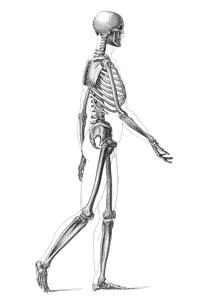The human being continues to evolve and fast
2007/12/30 Galarraga Aiestaran, Ana - Elhuyar Zientzia

The researchers of Wisconsin have studied the changes in the human genome and have checked when they have occurred; the result is that the current man is genetically more distinct from the man of 5,000 years ago than the Neanderthal man. In fact, in the last 5,000 years it is estimated that the rate of selection has been 100 times higher than any other time.
The researchers have also taken into account the origin of the people analyzed. Chinese, Japanese, African and North European, among others, have found evidence that they have recently evolved in 7% of their genes. In addition, they have come to the conclusion that human groups are separating. In Europe, Asia and Africa are changing genes very quickly, but changes are specific in each continent. This makes people from one and the other continents look less and less alike. According to the researchers, the reason is that there have been no major gene exchanges between the continents, since man left Africa 40,000 years ago.
Growth of the population

The key to acceleration is the growth of the human population, according to researchers. 10,000 years ago, in the world there were only a few million, 2,000 years ago there were 200 million and today we are on our way to 7.000 million. The growth of the population has been accompanied by important changes in culture and ecology that have led to new possibilities of adaptation. In the last 10,000 years, for example, there have been significant changes in the teeth and skeleton, as well as genetic changes motivated by diet and diseases.
A clear example is the lactase gene. In China and Africa, most people are affected by milk, as they cannot digest lactose from milk. Once childhood is overcome, the lactase enzyme gene is inactivated, so they do not produce the enzyme necessary to digest lactose. In the north of Europe, however, most have this active gene, even in adulthood. It seems that in this area the mutation that gives them of this capacity arose, which constituted an advantage, so this genetic change has spread through Europe.
Also diseases

Diseases have also influenced the acceleration of evolution, especially since the birth of cities. Genetics know that more than twenty mutations provide some resistance to malaria. It is foreseeable that these changes advance.
Recently, for its part, it was shown that a gene, the CCR5, was born 4,000 years ago, and now has 10% of Europeans. They have found it because it shelters AIDS, but before it seems it protected it from smallpox, which would help it expand.
One of the researchers compares the issue with sci-fi stories. According to him, as it happens in fiction, in human history there are mutants that represent the previous population, sometimes in silence, because they face better the evils and famines, and others through the struggle. And we are heirs of those mutants.
Published in Zazpika

Gai honi buruzko eduki gehiago
Elhuyarrek garatutako teknologia






